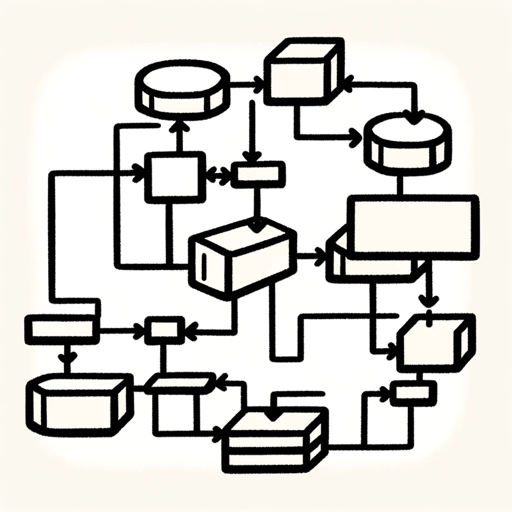Database Design-database design tool online
AI-powered database design made easy
What is a database?
Why do I need a database?
What types of database are there?
What normal forms are there?
What types of relationships are there?
Related Tools
Load More
Database Designer
This GPT can provide guidance on database schema design, SQL queries, data normalization, database optimization, and handling various database management systems (DBMS) like MySQL, PostgreSQL, and MongoDB.
Database Architect (+Database Visualization)
Database Expert GPT: Design Databases + 🔴VISUALIZE IN-CHAT🔴+ Optimize queries, Create Normalized Database structures and more. For: SQL, Oracle, Salesforce, GA4

DBT Architect
Professional dbt expert for precise guidance.

SQL Database Architect
Expert in SQL DB design with the ability to print ER diagrams

PostgreSQL Assistant
Expert in PostgreSQL data modeling and querying.

SQL to ERD
Simply put SQL query code, get ER diagram.
20.0 / 5 (200 votes)
Introduction to Database Design
Database design is the process of structuring a database to efficiently store, manage, and retrieve information. The design process involves defining the database schema, which includes tables, relationships, and constraints that organize and enforce data integrity. The primary purpose of database design is to ensure that data is stored in a way that minimizes redundancy, ensures consistency, and allows for efficient data retrieval. For example, a well-designed database for an e-commerce platform would include tables for products, customers, orders, and inventory, with relationships that link orders to customers and products. This structure allows the system to efficiently manage and query data for operations like order processing and inventory management【7:12†source】.

Main Functions of Database Design
Data Modeling
Example
Using Entity-Relationship (ER) models to define entities, attributes, and relationships.
Scenario
In a university database, ER modeling would be used to represent students, courses, and enrollment relationships. This helps in visualizing and planning the database structure before implementation.
Normalization
Example
Applying normalization techniques to reduce data redundancy.
Scenario
In a customer database, normalization ensures that customer contact details are stored in one place, preventing inconsistencies and reducing storage costs by eliminating duplicate data entries.
Performance Optimization
Example
Indexing tables to improve query speed.
Scenario
A retail database uses indexing on product and sales tables to speed up search queries, allowing for faster report generation and inventory checks, thus improving the overall efficiency of the sales process.
Ideal Users of Database Design Services
Database Administrators (DBAs)
DBAs benefit from database design by using tools and methodologies to create efficient databases that meet organizational needs. They focus on ensuring data integrity, performance, and security. DBAs use design principles to maintain databases and implement changes that improve database operations and support application requirements【7:9†source】.
Application Developers
Developers use database design to create applications that interact seamlessly with the database. A well-designed database supports application features such as data validation, transaction management, and user authentication. Developers can optimize application performance by designing databases that support the application's data access patterns【7:15†source】.

How to Use Database Design
Visit aichatonline.org for a free trial without login
Go to aichatonline.org and start your free trial of the database design tool without needing to log in or subscribe to ChatGPT Plus.
Familiarize yourself with the basics of database design
Read through introductory materials and tutorials to understand key concepts such as ER diagrams, normalization, and SQL.
Define the requirements for your database
List all the necessary entities, attributes, and relationships based on your project's needs. This step ensures you cover all aspects of the database you want to create.
Use the database design tool to create your schema
Start designing your database schema using the tool's interface. Begin with creating tables, defining primary keys, and establishing relationships.
Validate and optimize your design
Run validation checks to ensure there are no errors or redundancies. Use the tool's optimization features to improve the performance and efficiency of your database design.
Try other advanced and practical GPTs
Image editor
AI-powered image editing made easy

Writing Companion
AI-powered writing companion for all needs.

GPTech
AI-powered tools, customized by you.

GPT Shield
AI-powered Security for Your Bot

Avatar Maker
Create unique avatars using AI

GCP
AI-driven tool for clinical trials.

SEO Content Rewriter
AI-Powered Content Optimization Tool

Easy Video Search
AI-driven search for all your video needs.
SEO Copywriting Wizard
AI-powered content optimization made easy
TOEFL Tutor Pro
AI-powered TOEFL Preparation.

EduGPT
AI-powered expertise for academic and technical needs.

IELTS Speaking Test Simulator
AI-Powered IELTS Speaking Practice

- Data Analysis
- Web Development
- Project Management
- Research Projects
- Business Intelligence
Q&A About Database Design
What is database design?
Database design is the process of creating a detailed data model of a database, including the structure of tables, relationships, and data types. It aims to ensure data is stored efficiently and can be accessed and managed effectively.
Why is normalization important in database design?
Normalization is a technique used to organize a database into tables and columns to reduce data redundancy and improve data integrity. It ensures that each piece of data is stored in one place, which simplifies updates and maintenance.
How does an Entity-Relationship (ER) diagram help in database design?
An ER diagram visually represents the entities in a database and the relationships between them. It helps designers understand the database structure and the connections between different data points, facilitating better planning and design.
What are primary and foreign keys in database design?
A primary key is a unique identifier for a record in a table, ensuring that each entry is distinct. A foreign key is a field in one table that uniquely identifies a row of another table, creating a relationship between the two tables.
What are some common mistakes to avoid in database design?
Common mistakes include not normalizing the database, creating too many indexes, ignoring future scalability, not defining clear relationships between tables, and failing to document the design thoroughly.